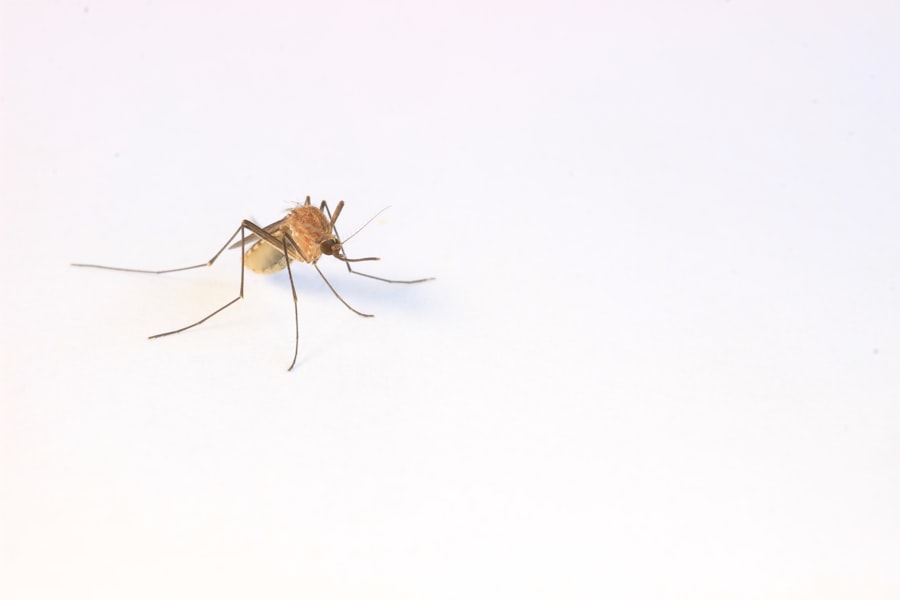
Mosquito traps are devices designed to attract and capture mosquitoes, helping to control their populations. These traps work by using various methods to lure mosquitoes towards them, such as emitting carbon dioxide, heat, or light. Once the mosquitoes are attracted to the trap, they are either trapped inside or killed.
The Myth of All Mosquito Traps Being Equally Effective
While mosquito traps can be effective in controlling mosquito populations, not all traps are created equal. There are several factors that can affect the effectiveness of a mosquito trap. One factor is the type of attractant used. Some traps use carbon dioxide as an attractant, while others use heat or light. The effectiveness of these attractants can vary depending on the species of mosquitoes in the area.
Another factor that can affect the effectiveness of a mosquito trap is its placement. Mosquitoes are more likely to be attracted to traps that are placed in areas where they are known to breed or rest. Additionally, the size and design of the trap can also impact its effectiveness. Some traps are designed to target specific species of mosquitoes, while others are more general in their approach.
The Reality of Mosquito Traps: Which Ones Actually Work?
There are several types of mosquito traps available on the market, but not all of them are equally effective. One of the most effective types of mosquito traps is the CO2 trap, which uses carbon dioxide to attract mosquitoes. These traps mimic the breath of humans and animals, which is a primary attractant for mosquitoes.
Another effective type of mosquito trap is the light trap, which uses ultraviolet light to attract mosquitoes. These traps work by emitting light at a specific wavelength that is attractive to mosquitoes. Once the mosquitoes are attracted to the light, they are either trapped inside or killed.
The Myth of Mosquito Traps Being Completely Chemical-Free
While some mosquito traps claim to be chemical-free, this is not entirely true. Mosquito traps often use chemical attractants to lure mosquitoes towards them. These chemical attractants can include substances such as octenol, lactic acid, or ammonia. These chemicals mimic the scents that are attractive to mosquitoes and help to draw them towards the trap.
The Reality of Mosquito Traps: Understanding Their Chemical Components
Mosquito traps use a variety of chemicals to attract and kill mosquitoes. One common chemical used in mosquito traps is octenol, which is a naturally occurring compound found in human breath and sweat. Octenol is highly attractive to mosquitoes and helps to lure them towards the trap.
Another chemical commonly used in mosquito traps is lactic acid, which is also found in human sweat. Lactic acid is known to be highly attractive to mosquitoes and can help to increase the effectiveness of a mosquito trap.
While these chemicals are generally considered safe for humans, there are potential health risks associated with their use. It is important to follow the manufacturer’s instructions when using mosquito traps and to take precautions to minimize exposure to these chemicals.
The Myth of Mosquito Traps Attracting Only Mosquitoes

Contrary to popular belief, mosquito traps can attract more than just mosquitoes. While mosquitoes are the primary target of these traps, other insects may also be attracted to them. This can include beneficial insects such as bees and butterflies, as well as nuisance insects like flies and gnats.
The Reality of Mosquito Traps: What Other Insects They Attract
Mosquito traps can attract a variety of insects, including beneficial and nuisance species. Bees and butterflies may be attracted to the sweet scents emitted by some mosquito traps, while flies and gnats may be drawn in by the heat or light emitted by others.
It is important to be able to identify and differentiate between mosquitoes and other insects to ensure that the trap is effectively targeting the intended pests. If non-target insects are being attracted to the trap, it may be necessary to adjust the placement or type of trap being used.
The Myth of Mosquito Traps Being Completely Safe for Humans and Pets
While mosquito traps are generally safe for humans and pets when used properly, there are potential risks associated with their use. Some traps use electrical currents or fans to capture or kill mosquitoes, which can pose a risk of injury if not handled properly. Additionally, the chemicals used in some mosquito traps can be harmful if ingested or inhaled in large quantities.
The Reality of Mosquito Traps: Potential Risks and Precautions
When using mosquito traps, it is important to take precautions to minimize the risks associated with their use. This includes following the manufacturer’s instructions for proper placement and maintenance of the trap. It is also important to keep the trap out of reach of children and pets to prevent accidental injury or ingestion of chemicals.
If using a trap that uses electrical currents or fans, it is important to handle these components with care to avoid injury. It is also important to regularly clean and maintain the trap to ensure its effectiveness and prevent the buildup of debris or dead insects.
Separating Mosquito Trap Myths from Reality for Effective Mosquito Control
In conclusion, mosquito traps can be an effective tool for controlling mosquito populations. However, it is important to understand the myths and realities associated with these traps in order to use them effectively and safely.
Not all mosquito traps are created equal, and their effectiveness can vary depending on factors such as attractants used and trap design. It is also important to understand that mosquito traps are not completely chemical-free and can attract more than just mosquitoes.
By understanding the effectiveness and risks associated with mosquito traps, individuals can make informed decisions about how to best control mosquito populations in their area. With proper use and precautions, mosquito traps can be a valuable tool in the fight against mosquitoes and the diseases they carry.


